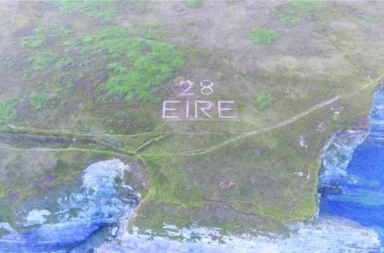There’s no escaping the fact that at some point in our lives, the vast majority of us will be involved in a road traffic accident of some sort. Whether a minor prang or god forbid, something more serious, it’s important to know how to act during what can be quite a stressful situation.
One of the most important things to do is to stay calm. This is obviously easier said than done in the heat of the moment, but if you can, it will make a big difference.
Before we get into the process of the things you should do after an accident, it’s equally as important that we mention the things that you should be carrying with you when driving in Spain.
What You Must Carry in Your Vehicle
In Spain, it is the law that you must have certain items in your vehicle if you are driving on Spanish roads. This includes legal documentation as well as other important items.
The following list includes compulsory items as well as recommended items as indicated.
- Driving License (Carnet de Conducir)
- Car registration document or rental documents (Permiso de Circulación)
- ITV documentation (Ficha Técnica)
- Insurance policy document
- European Accident Agreement Form (in Spanish «parte de declaración amistosa de accidentes» or sometimes «Declaración Amistosa de Accidente de Automóvil«)
- Spare pair of glasses if worn by driver
- Fluorescent high visibility jacket (For all passengers)
- Two warning triangles
- Child seats. Children under 1.35 metres in height or under 12 years of age are not permitted to sit in the front seats of any vehicle. There is a fine of 200 Euros for such an offence. Children up to the age of 12 and measuring less than 135cm travelling on the front seat of a car must be seated in a child restraint system adapted to their size and weight. Children measuring more than 135cm may use an adult seat belt.
- First-aid kit (Recommended)
- Fire extinguisher (Recommended)
- Spare bulbs (Recommended)
- Drinking Water (Recommended)
You may carry a photocopy of any documents instead of the originals, but copies must be stamped and certified by notary.
In the Event of an Accident
We hope you don’t, but if you do happen to have a road traffic accident here in Spain, it is really important that you have at least a basic understanding of the process in dealing with it competently and as efficiently as possible with minimal stress.
If you take a few minutes to become familiar with the steps that follow, you should be able to take any future accidents in your stride.
Step 1
Put on your fluorescent high visibility jacket. If other passengers are involved and have got out of the vehicle, they should also wear a jacket each.
Get the passengers away from the vehicle and to a safe place at the side of the road. If possible, place passengers on the sidewalk or behind any road barriers or fencing.
Check on the passengers of all vehicles involved and determine if anyone has been injured. If so, call the police on 112 and make them aware that there has been an accident and that there are injured passengers. If there are any injured passengers, leave them in the vehicle until the medical services arrive. Moving them could exacerbate any sustained injuries.
Step 2
If vehicles cannot be moved and parked, place warning triangles in front of and behind the vehicle. If slow roads, place around 3 metres to the front and rear. If on a motorway, they will need to be placed around 50 metres and 100 metres from the rear of vehicle to allow other vehicles time to see the vehicle and avoid any further accidents.
If there is only minor damage and the vehicle can be moved, move it to the side of the road so not to obstruct other vehicles and to keep the traffic flowing.
At this point you should also turn on your hazard/warning lights and turn off the vehicle if the engine is still running.
Step 3
If it’s a bad accident, someone has been injured or if an agreement cannot be made between drivers, call the police on 112. If any of the passengers have been injured, do not try to move them. Be sure to report any injuries to the police so that they can dispatch an ambulance.
Step 4
Make a note of the other vehicle/s number plate, make and model of car and driver’s name, address, policy number and driver’s license number. Also get the name and numbers of any witnesses. Take photo’s if possible for future reference!
Do not claim liability for the accident or make any judgements, which may imply responsibility.
Step 5
Complete the European Accident Agreement Form as fully as possible. The forms have a carbon copy feature which means you will get two copies of this once completed. The form is dark blue on the outside and when opened has the heading «Declaración amistosa de accidente tu automóvil«.
The form has two sections in blue and yellow. Blue is marked as «Vehiculo A» and yellow as «Vehiculo B».
If the police arrive at the scene, they will complete their own report referred to as an «Atestado Policial«.
Step 6
The next important step is to report the incident to your insurance company. It is the law in Spain that you must report all accidents to your insurance company within 5-7 days of the event.
Most insurance policies will include breakdown cover and will send out a Grua (tow truck) to recover the vehicle and transport you back to your home.
Step 7
The final step is to seek any indemnity or compensation. If the accident is not your fault and you feel you need to take legal action, you must report the incident to the authorities within 6 months.
If a court rules against you, you are still within your rights to take civil action against the other party, but this has to be done within one year of the accident. Indemnity may also be settled out of court with the lawyer making negotiations directly with the insurance company.
Some of the steps may vary slightly depending the severity of the accident and the situation, but if you stick with these steps you should be just fine.
You may also wish to read our article on how to pay a traffic fine in spain.
If you found this article of interest, please click on one of the sharing buttons below and share with your friends and family who may also benefit from reading this.


